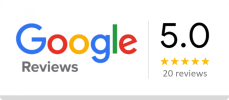In today’s digital world, having a website is essential for any business or personal brand. But just having a website isn’t enough you need to make sure it’s secure. Hackers don’t just target big corporations; small businesses and personal sites are often even more vulnerable because they tend to lack proper security measures.
If you’re not tech-savvy, don’t worry. This guide will walk you through simple and effective ways to secure your website, no complex coding required.
1. Use HTTPS, Not HTTP
One of the first and most important steps is to install an SSL certificate. This encrypts the data transmitted between your website and your visitors, protecting sensitive information like login credentials or contact form submissions.
How to do it:
- Most hosting providers offer free SSL certificates via Let’s Encrypt.
- After installing it, make sure your website URL starts with https://.
2. Choose a Reliable Hosting Provider
Your web host plays a major role in your website’s security. A good host will offer:
- Firewall protection
- Automatic backups
- 24/7 support
- DDoS protection
Look for reputable providers like SiteGround, Bluehost, or WP Engine if you’re using WordPress.
3. Keep Everything Updated
Outdated themes, plugins, or software are one of the most common ways hackers get in.
What to update:
- CMS (like WordPress, Joomla, etc.)
- Themes and plugins
- Any third-party tools integrated into your site
Most CMS platforms offer an “auto-update” feature enable it if you can.
4. Use Strong Passwords and Two-Factor Authentication
Weak passwords are a hacker’s dream. Always use a strong mix of letters, numbers, and symbols.
Better yet:
- Use a password manager like LastPass or 1Password.
- Enable two-factor authentication (2FA) for your admin login.
5. Limit Login Attempts
Hackers often try to brute-force their way into your website by guessing the password.
What to do:
- Install a plugin like Login LockDown or Limit Login Attempts Reloaded for WordPress.
- Change your login URL from the default /wp-admin to something custom.
6. Backup Your Website Regularly
If something goes wrong—like a hack or server crash—a recent backup can save you a ton of headaches.
Use tools like:
- UpdraftPlus (for WordPress)
- JetBackup (via hosting control panels)
- CodeGuard or BlogVault
Set backups to run automatically on a regular schedule.
7. Remove Unused Plugins and Themes
If you’re not using a plugin or theme, delete it. Even inactive components can pose a risk if they’re outdated or vulnerable.
8. Use a Web Application Firewall (WAF)
A WAF acts like a shield between your site and the internet, blocking malicious traffic before it reaches you.
Good options include:
- Cloudflare (free and paid plans)
- Sucuri Firewall
- Wordfence (for WordPress)
9. Scan for Malware
Even if your site seems fine, hidden malware could be lurking.
Free tools to scan your site:
- Sucuri SiteCheck
- Wordfence Security Scanner
- Astra Security
10. Educate Yourself and Your Team
Website security isn’t a one-time fix—it’s an ongoing effort. Stay informed about the latest threats and best practices.
Follow security blogs like:
- WPBeginner (for WordPress)
- Google Security Blog
- Mozilla’s Security Blog
Final Thoughts
With a few proactive steps, you can protect your content, your visitors, and your reputation. Remember: security is about prevention, and the best time to start is now. If you don’t have the time and need professional help, then contact your local website design Auckland company.

